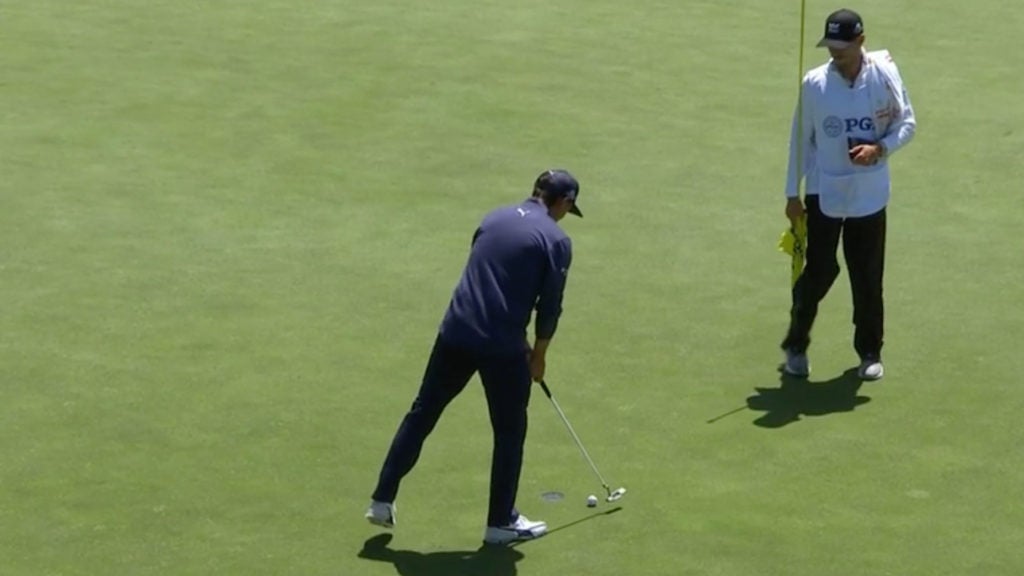Rickie Fowler is going to want that one back.
Facing down a par putt at the par-4 6th (his 15th hole of the day), Fowler hit a nearly perfect putt — but it lipped out, settling just a few inches past the hole. Fowler could hardly believe it. The miss meant he’d log his first bogey of the day, putting a blemish on what had been a squeaky-clean four-birdie effort, bringing him safely inside the cut line.
But then things got much worse. Fowler walked to his ball and took a quick swipe, but he caught a bit of extra grass on his way to the ball, catching the putter and striking an extremely glancing blow to the golf ball. The ball appeared to move — barely — but didn’t get nearly enough speed to reach the hole.
It’s the sort of thing you could imagine doing yourself — but a mistake you basically never see a pro make.
“Wait a minute!” an announcer on the ESPN stream called out. There was some back-and-forth as they tried to determine whether he had really attempted to hit it. One announcer called it a “shadow-punch.” Even when announcer Stuart Appleby was told it had moved, he wasn’t sure. “Okay — I’ll go with it,” he said.
But Fowler himself seemed aware that he had made an attempt to hit the ball and counted the stroke accordingly.
So what are golf’s whiff rules, anyway? Let’s take a look at one bit from the Rules of Golf that defines a “stroke”: it is “the forward movement of the club made to strike the ball.” In other words, for a stroke to be made, a golfer must have the intention of trying to hit the ball.
There is some leniency for practice swings or accidental contact with the ball on the putting green. Rule 13.1d(1) says that if you accidentally cause your ball to move in, you may replace your ball on its original spot without penalty and play on. Unfortunately, Fowler appeared to make a stroke — he intended to hit the ball, in other words — and therefore had to take the extra shot.
Unfortunately for Fowler, the whiff came at a costly moment in the round. Counting the whiff, his double-bogey 6 sent him from one under to one over for the tournament, a single shot outside the cut line at the time. When he added a bogey at the challenging par-3 8th, he slipped to two over, which is where he finished his day.
The PGA Championship cut line is the top 70 and ties. When the final putt dropped on Friday night, the cut line had moved to one over, meaning Fowler’s botched tap-in had officially cost him a chance to play on the weekend. Instead, he’ll be heading home early.
